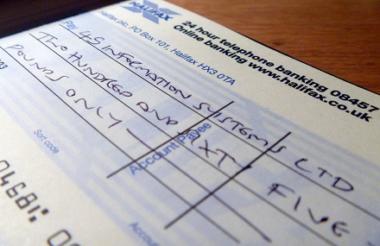Some large charities still received a substantial proportion of their donations through cheque payments, according to new research.
Writing for Charity Finance magazine, charity finance manager AJ Finn, found that Macmillan Cancer Support and the Canal & River Trust received tens of millions of pounds through cheque donations in their latest financial years.
Macmillan received approximately 100,000 cheques in 2017, which accounted for £65m out of the charity’s total £253m income.
The Canal & River Trust received more than 7,200 cheques in 2017, which accounted for £12m out of the charity’s £203m income.
Meanwhile, the Salvation Army reported that cheques make up 78 per cent of the payment method used to donate through its national appeals.
Some 29 per cent of charities receive the majority of their donations via cheques, according to CAF's UK Giving Report 2018, and the Cheque and Credit Clearing Company (C&CCC).
However, only 7 per cent of people who gave to charity in 2017 did so by cheque.
Finn says in the article: “Charities are unlikely to turn their back on cheques as they remain an important source of income.”
Cheque fraud in decline
Cases of cheque fraud have declined sharply over the past five years, according to the Financial Fraud Action UK 2017 Annual Fraud Update.
In 2012, there were 15,539 cases of cheque fraud in the UK, which accounted for £37.7m in lost funding.
But in 2017, there were only 1,745 cases, with lost revenue valued at £9.8m.
However, some fears of a rise in cheque fraud have been raised due to the introduction of the cheque imaging system in October 2017.
C&CCC states that “in-built security techniques and checks will be used to help prevent fraud” in the new system, and that detecting duplicate cheques will be one of the “key functions” of the new system.
Finn says: "Charities would be well advised to review their banks’ terms and conditions and ensure that they are being followed to the letter."
The full article is available here.
Related articles












